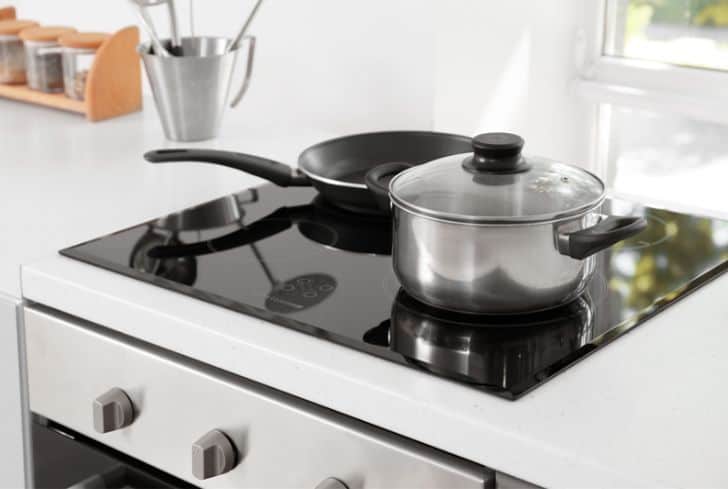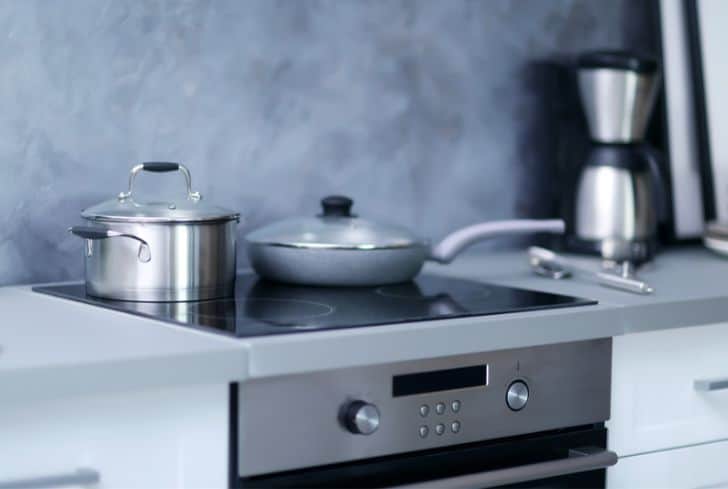Although gas stoves have been used for quite some time, the widespread extraction and use of fossil fuels seriously impacts the environment and has contributed to the recent surge in gas prices.
An electric stove burner is an excellent choice for an improved and more secure substitute for gas cookers. But then, with the new invention emerges the question — just how many amps does an electric stove use?
Well, in this article, we’ll look into the energy consumption aspect of the electric stove, giving you all the details you need.
Let’s get into the nitty-gritty!
How Many Amps Does an Electric Stove Use?
Most electric stoves draw between 20 to 60 amps on average. This is much like several other household equipment, including your electric heater and HVAC (central air conditioning unit). However, in contrast to the standard wall outlets found throughout your house, the outlet for an electric stove has precise wiring requirements.
In contrast to appliances that require wiring by a qualified technician, electric stoves are designed to be plugged into a dedicated outlet. Regardless of the appliance, it’s crucial that the wiring, outlet, and breaker are all matched to handle the energy demand effectively.
To illustrate, the electric stove outlet is appropriately sized for the wire it connects to, and this wire must be a suitable match for both the circuit breaker and the current draw of the appliance. This ensures safe and efficient operation while preventing electrical overloads.
How Many Amps Does a Gas Stove Use?
The average gas stove requires between 15 and 30 amps, a demand easily met by the standard 120-volt circuits commonly found in most homes. In some cases, larger gas stoves may necessitate up to 50 amps, although such requirements are relatively rare.
In contrast, a gas convection oven, which is distinct from a gas stove, draws more power than what a typical household circuit rated at 15-20 amps can provide.
Hence, before installing one of these stoves in your house, check whether your circuits can manage the extra load. Further, this may change based on the stove’s make, model, and size. Therefore, it is generally better to verify with the manufacturers to determine the particular amp used for your stove.
How Many Amps Does a Pellet Stove Use?
An average pellet stove draws between 2.5 and 3.0 amperes. This is equivalent to the power consumption of 303 watts per hour. That’s how much power your pellet stove needs to keep its blower, stirrer, and motors running.
Pellet stoves are very efficient household appliances because they use so little power. In fact, these appliances need much less power than most other models of electric heaters and fireplaces.
However, it’s worth noting that their increased power usage is primarily concentrated during the ignition process. Consequently, the energy efficiency of pellet stoves may decrease with each additional startup procedure, as this initial power demand can offset their overall efficiency.
Many homeowners are interested in replacing their electric fireplaces with pellet burners. That’s great news for anyone who wants to save money on heating their homes over the long, chilly winter.
Pellets are the ideal fuel for pellet burners. However, energy is needed to power the devices’ electrical and mechanical components to function.
How Many Watts Does an Electric Stove Burner Use?
Different varieties of electric stove burners commonly utilize anywhere from 2000 to 4000 watts of power. The temperature determines how many watts are needed; more amps and watts are required at higher temperatures. Therefore, you will need to develop and alter the voltage energy, circuit breaker, and other relevant items depending on the maximum wattage of your electric stove burner.
Electric stove burners are popular because they are convenient, efficient, and risk-free alternatives to traditional gas stoves. However, when using a burner on an electric stove, the biggest problem is the drain on the electrical grid.
Although the installation of a gas stove is typically a swift process, it comes with a notable risk of gas leaks and other potential accidents that could lead to fires. In contrast, electricity production can be expensive, and switching to an electric stove burner can offer a potential reduction in your monthly expenses, making it a cost-effective choice.
But then, access to electricity is a privilege in certain parts of the world, making it unlikely that an electric stove top would be a practical choice for everyone.
It’s important to remember that although using electricity to cook on an electric stovetop is a relatively risk-free option in today’s modern world, it still consumes three times as much energy as a conventional stovetop.
Can You Use a 40 Amp Breaker For a Stove?
Yes, you can use a 40-amp breaker for a stove. The National Electrical Code states that a 40A circuit can be used to supply any domestic cooking equipment with a rating of 12kW or less. However, because the vast majority of consumer appliances are more powerful than this, upgrading to a 50A circuit is necessary.
Since there is never enough electricity to go around, induction hobs on certain stoves and ranges may be set to provide reduced power to each burner.
This may be true even if optimum power is unavailable. Therefore, if you have two stoves and turn on the larger one, you will benefit from the entire output of both appliances.
In other words, if you switch on a second one at full power, you will receive less output since the available power will be split between them.
A stove operates at a nominal 240 V. However, a 50-amp circuit may provide optimal performance even in the best circumstances. Ranges are sensitive to voltage fluctuations and may shut off power to the burners if the drop is even slight.

Does a Range Hood Need a Dedicated Circuit?
Dedicated circuits are not required for Rangehood’s connection. In addition, you are not even allowed to use the little holder in the kitchen. Instead, you may use a lighting circuit or hardwire to connect your range hood. Following these guidelines is the safest way to utilize a kitchen range hood.
The potential for an electrical overload is the primary source of ambiguity over whether or not a range hood needs its dedicated circuit. Therefore, you must never allow the overloading of a circuit breaker.
A range hood by itself uses up only a little electricity. Because of this, a range hood does not need a separate circuit. But, on the other hand, you can only use old appliances simultaneously as the range hood.
Range hoods have amperages that must be compatible with the amperages of the ducted appliances. Because of this, a range hood is recommended to be wired into its own separate circuit in the home. If you do not have the choice, you must connect it to a circuit that serves a general function.
How Much Does It Cost To Run an Electric Stove Burner?
An electric stove will cost you around $9 monthly. These rates are mostly determined by the local cost of energy, which might be more or cheaper depending on where in the world you reside. Homeowners who depend on renewable energy sources may, in certain instances, see a reduction in their monthly costs.
Considering an average electricity rate of 10 cents per kilowatt-hour (kWh), a 1500-watt oven running for 2 hours a day will cost roughly 15 cents per hour, 30 cents every day, or $9 per month.
Using a gas stove may have been a more cost-effective option in the past, but the price of gas has significantly increased due to the diminishing availability of fossil fuels.
If you have a solar panel, you can utilize solar power while cooking on an electric gas stove burner. This will only increase in popularity as more people contribute to green energy. It will be productive and economical and make a significant contribution to the improvement of the environment.
Can You Use an Extension Cord For My Electric Stove?
In no circumstance should you connect your electric stove to an extension cable. Since electric stoves have such a high voltage going to them, using an extension cable with them is risky and should be avoided at all costs. However, a longer oven power cord can be necessary if you need a more extended connection to connect to your stove.
They come in various lengths, so you should be able to pick one that is the right size for you, even if it’s different from what you expected.
In the implausible scenario that you cannot obtain a power cable that is sufficiently long for your requirements, you will need to relocate your electric stove or your electrical outlet.
Adjusting the position of the electrical line that supplies power to the plug in your oven may be the only option available, depending on where the stove is situated.
A Guide to Efficiently Using an Electric Stove
There may be more efficient choices than investing in a brand-new stove to reduce cooking-related energy use. So instead, follow these energy-saving tips if you’re seeking ways to save money:
- Reduce the frequency with which you cook to accommodate more people. Planning your cooking session such that numerous items may be prepared at once can save you time and energy. Reheating food in a microwave is far more cost-effective than using an oven or stove.
- Make sure the stove door is closed. If you must open it, utilize the oven light and the window to avoid wasting heat.
- Pans made of glass or ceramic are preferable to metal ones for baking. They are better at dispersing heat evenly and efficiently.
- Get an early start on the process of cleaning itself. After cooking on the stove, start the cleaning process immediately to cut down on cycle time by several minutes.
Bottom Line
A single electric stove burner can utilize between 2000 to 4000 watts of power and would need 40 to 60 amps to operate. The amps and watts used are affected by the ambient temperature. Therefore, a dual pole circuit breaker with a 50 amp output is highly recommended.






